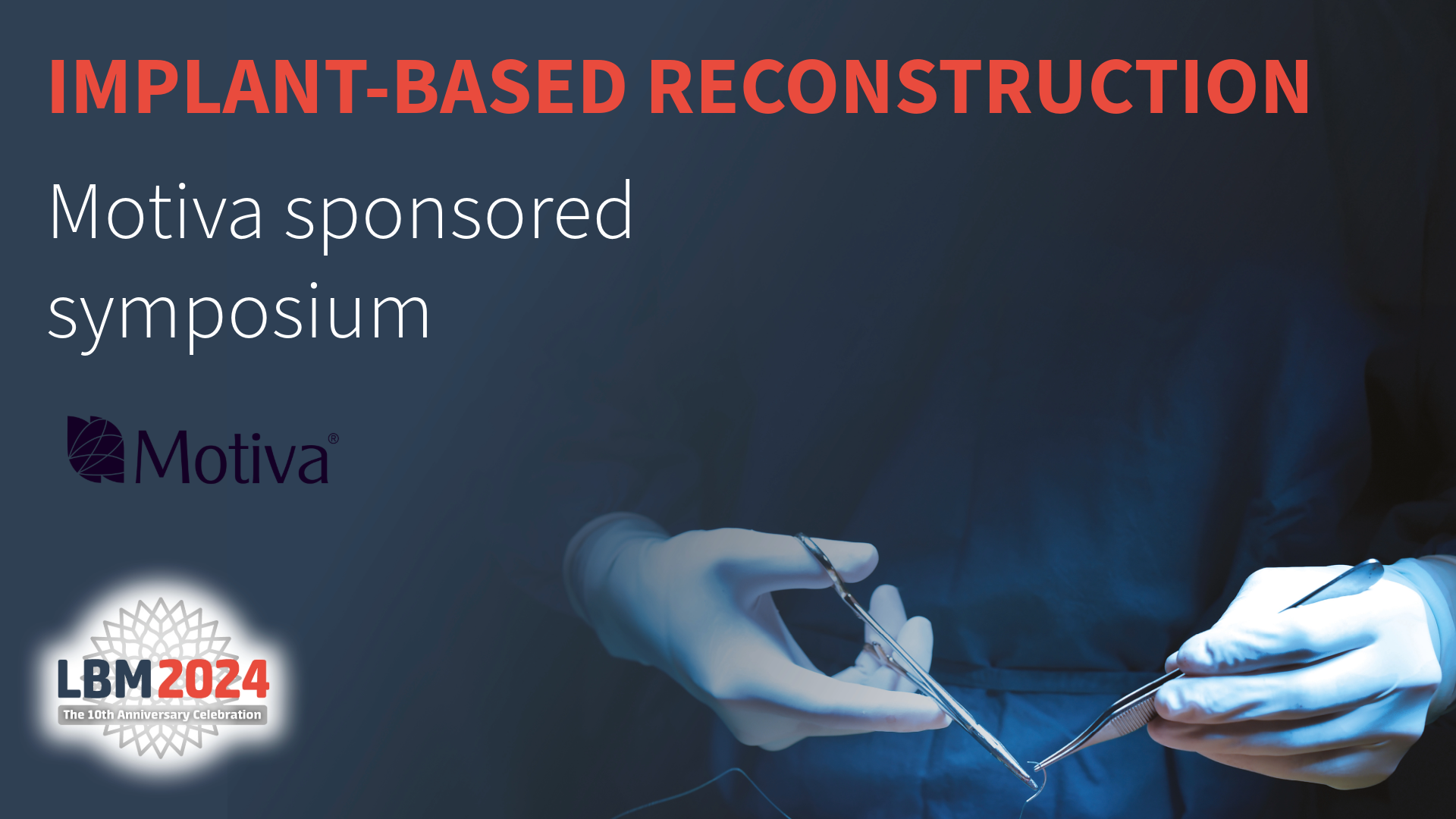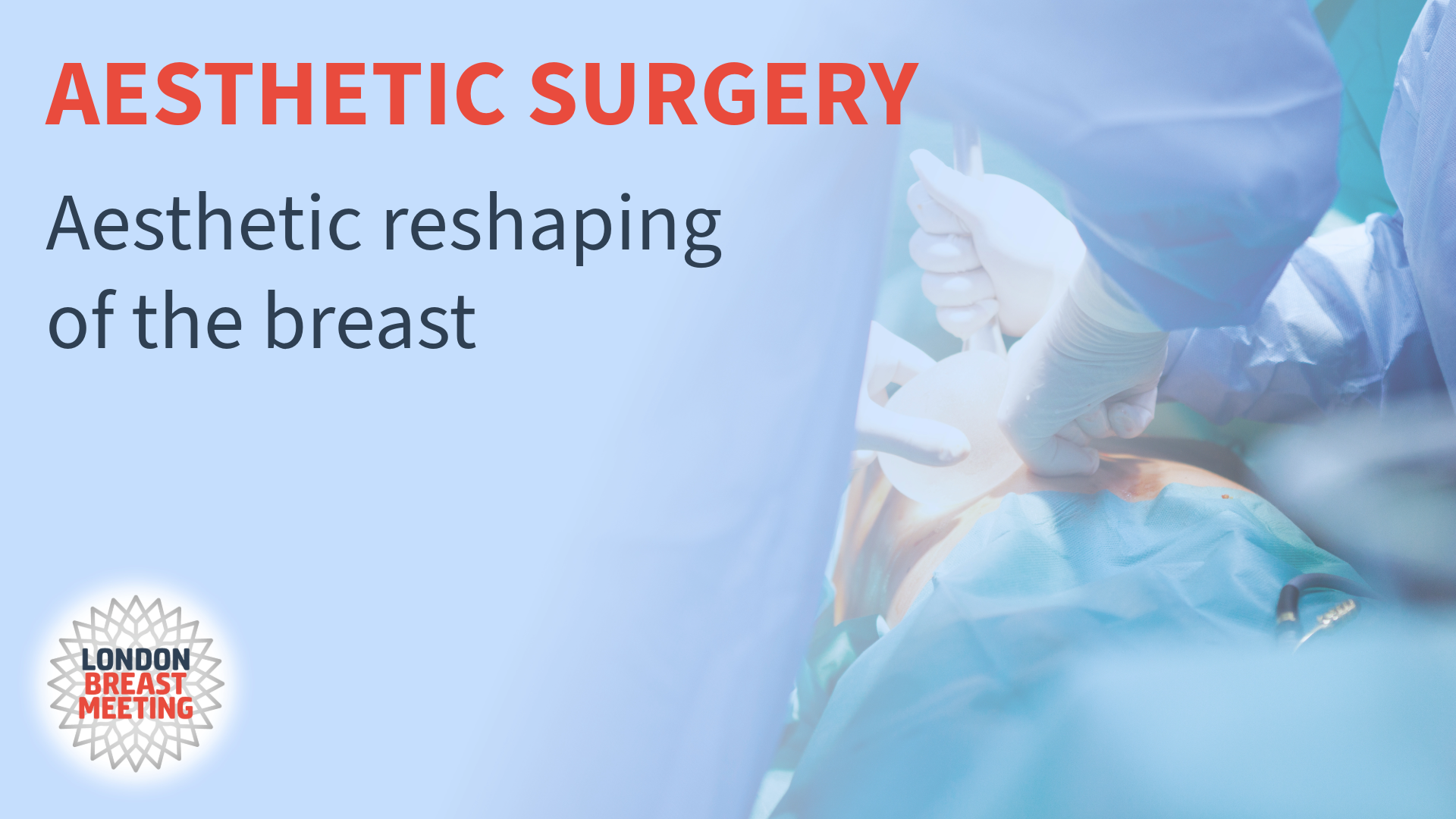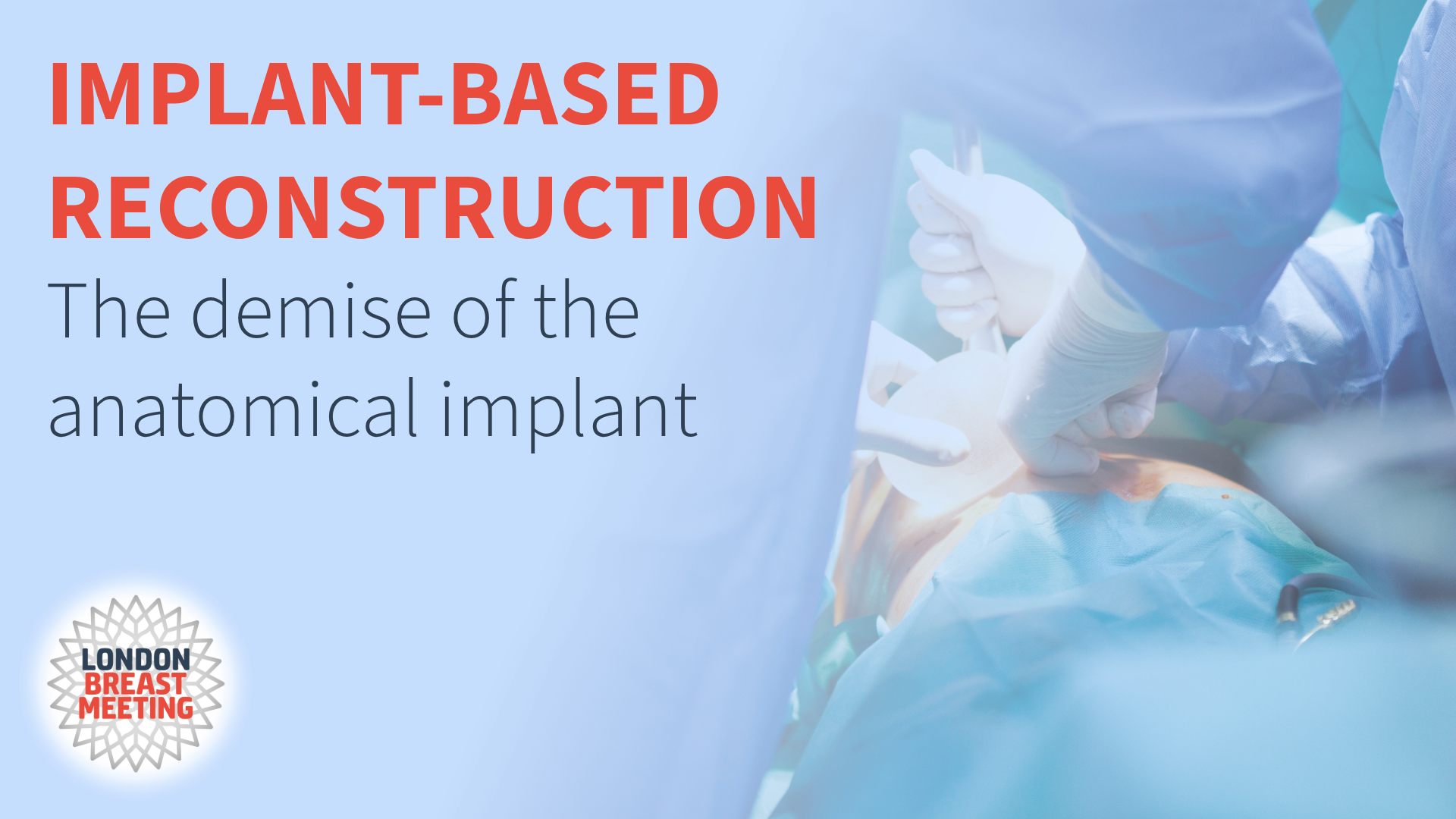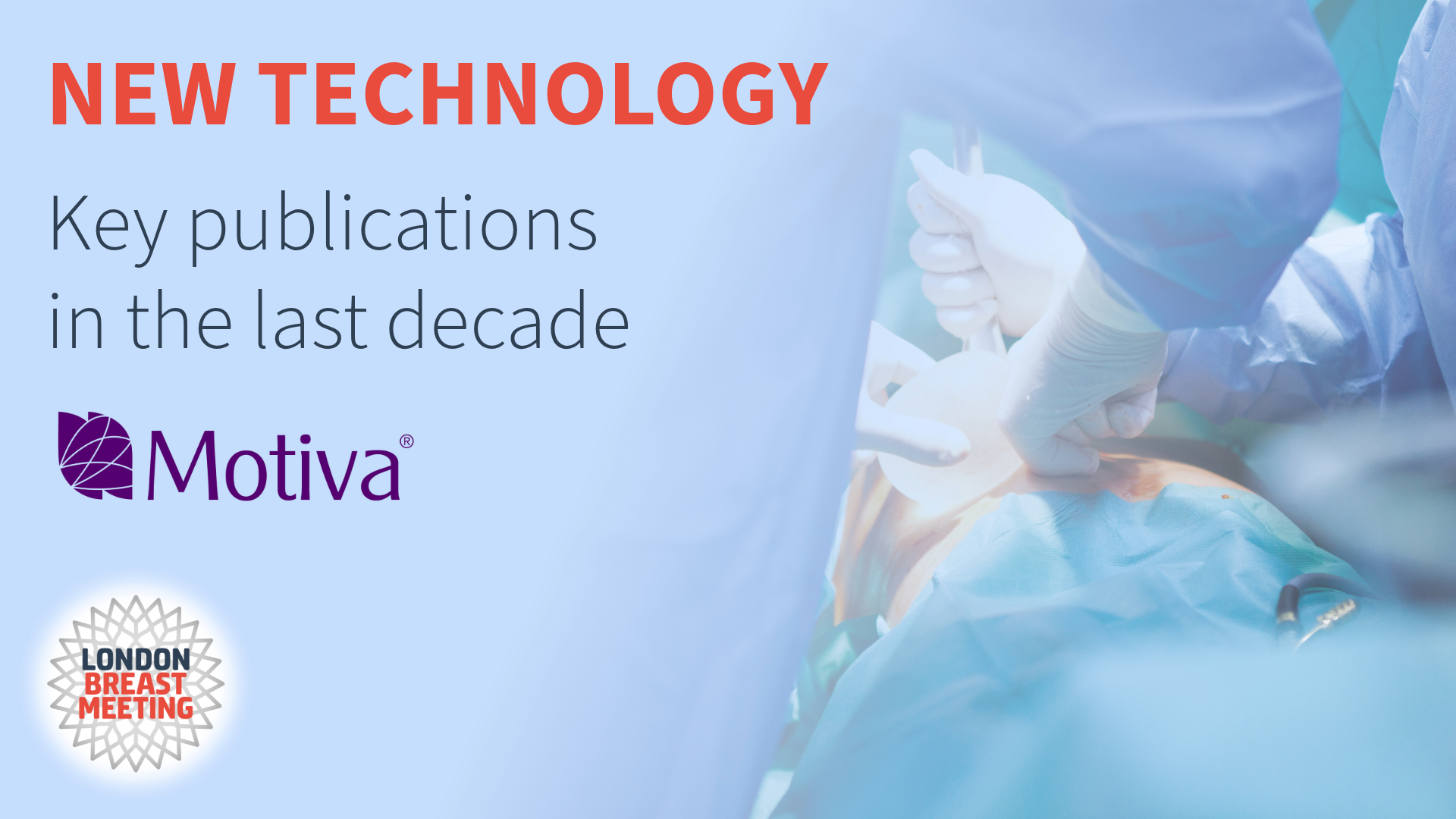So Everything starts with one word.
The word why The why will, and has to be the most important
question you always must ask yourself through life.
So let's ask ourselves the question, why are breast augmentation performed?
What is the purpose?
Well, the purpose for a patient to have a breast augmentation most likely is the desire.
For change of size and or shape of her breast.
The purpose for a surgeon to perform a breast augmentation most likely is a desire to add
quality of life to the patient.
And of course the financial compensation.
So far so good.
The second word then has to be How How do I, or should
I, or could I as a doctor with best intention, provide the patient the service of a breast
augmentation, adding her quality of life with least harm and best safety?
One word. Data.
The tool trying to the why, how, and what.
For me, making a shift to a very new device.
Smooth, nanotechured was data.
So I published with their colleagues, Dr. Jaeger and Doctor Stavro my experience of
incorporating smooth nano surface implants into our practises.
And that's basically the title of this lecture.
How to incorporate a new device into a facility.
In this case, a smooth nanotech.
And by doing so, also answer the final question.
What? What is the conclusion of our data and how am I
as a doctor responding to it?
Everyone loves this story, and this is my story and topic of this lecture,
my experience of incorporating smooth nano surface implants,
and this is a 6 year study.
Following these patients over time with a 79% compliance.
These are my disclosures. I hold stock options in establishment labs,
and I'm also Moiv FDA implant investigator.
Once upon a time, In the Stone Age I met this gentleman, Doctor John Tebetz.
And he changed my life and at that time I was a junior plastic surgeon at a big clinic in
Stockholm under Perin.
I then met Doctor Pat Maxwell who made a big impression on me and I started educating
doctors all over the world.
Running so-called preceptor ships, becoming the chairman of AMI.
So why are these photos important for this lecture?
Because they remind us that the reason we might see a little bit further today than yesterday
is because we stand on the shoulders of previous.
They shared their knowledge and experiences.
They were also strong believers in textured anatomical implants.
So once again, the why.
Why incorporate the new device concept in a fairly successful practise?
Because I had to challenge my own status quo.
Due to a new situation that was raising concerns, maybe even endangering the long-term
safety of my patients.
Breast implant associated LCL and patient breast implant illness concerns.
Those were the reasons why I looked at these implants and devices.
Now you might laugh at a photo like this, but this is what I was presented with by some of
these patients and when you look at the drawing like this.
You do understand that person does not feel well.
Now the reason for that.
Might be many one of them might be implants we do not know,
but what we do know that there are studies showing that even after total capsulectomy is
on block, patients initially feel better but then over time there's no change.
So is it, is it just?
Some sort of problem.
Mental health illness, or is there a reason?
We suspecting implants being part of this, we do not know,
but what I do know is that patients are concerned.
So 8 years ago I started looking at these nate surface devices as an option in my practise,
not talking about the devices, not mentioning, but looking at them.
Incorporating them, looking at the data.
And then this happened.
2019 Allegan Coldacter implants.
And at that time with the position I had, I was left with two surfaces basically within my
practise. The smooth and the microtecture of Cilex.
This has been my message teaching over the years.
Tured form stable implants give you controlled tissue expansion.
And stability over time.
They still do that hasn't changed and all of this is still relevant and accurate.
I could take a patient, lower the fold, create something that I knew over time would be stable
and aesthetically pleasing.
And even after more time, like after 11 years and 1 child,
they still looked pretty decent.
Sometimes there was a dropping of the breast, but the implant still stayed where I put it.
And even with bigger implants, which were rare in my practise,
they would hold over time.
And so This is what I feared, this is what I've been teaching about smooth,
uncontrolled tissue stretching, soft free floating breasts with less stability.
And this was my experience when I started I used all different type of implants,
all different type of incisions blunt sharp.
General anaesthesia and then I shifted with the textured on the direct vision,
no drain, sitting up 20 minute procedure instead of 60,
antibiotics.
And then I shifted more towards.
The smooth ones.
Using no antibiotics.
Faster surgery, faster recovery, however, 180 degree shift.
Lan I believe everyone can tell what's.
Where it is going. So what do I know that some of you might not
know? I know my own data.
That's what I know. Data from my world.
With my patients, surgical technique, aseptic technique, pre and post-op regime,
and follow up. And why is this important?
If you do not have your own data, you will always be hostage of other people's opinions.
And that's very important to understand, but not only that,
when you read an article.
The way they have their aseptic technique or their surgical technique might not apply in
your unit.
That's why your data in your world is an important thing to move forward.
If you do not measure, you don't know how to manage.
I'm a pure capitalist in that sense.
The reason why I'm collecting the data is not to stand in front of you or to publish,
it's to run a better practise.
Who's the best in the room, the one with the least reoperation complications for the
patients and for your practise.
So this is what our data showed us.
It showed us the capa contractual rate of 0.4%, rupture rate of 0.2%,
and with a follow-up rate at 4 years on 79%, which is fairly good.
Now, the population was 1,053 patients, primary 520,
secondary 246, and primary with augmentation masterexi 204,
and secondaries with Master Pix 83, 2 centres.
2,106 motiva implants.
And 516 round and 1590 so-called
ergonomics were anatomically in their shape over time.
So our article corresponded quite well with previous published article.
This was a meta-analysis.
Which showed capsic contraction 0.54 and RAA 002.
So lessons learned.
Well, the overall complication rate was 4.9%.
Capsicum Thrasher 0.4 Rupture 0.2, as I said, ALCL so far so good.
Map position 2.9.
So that's the big problem, my positioning.
Now, the most Prevalent complications were those.
However, following adaptions after 3 years looking at the data,
we change and we reduce those to 0.5.
So as you can see, initially I went implant placement submuscular and shifted to sub
glandular. Being able to control Cooper's ligaments.
Better And as you can see initially.
I had bigger size and then I went smaller.
And why is that? Well, when I was introduced to these implants,
they were supposed to be micro textured and they're not,
they're super smooth. I thought they would hold up with through
friction like. Microtexturedilex.
They do not. And I learned that the hard way.
So what you're told is not always the truth you need to find out that truth for yourself in
your practise. Now, in secondar augmentations.
Applying certain techniques of ante cap flaps and popcorn.
I was able to put back implants with the same size or even bigger.
But as you can see.
In secondaries, I changed.
Initially, I tried to create a new pocket, but then I kept the old pocket if that capsule
looked nice. And smooth and soft, however, not all of it,
but in the lower pole.
Now the size change dropped, and this was not just due to the device,
but also philosophic.
Reason Understanding looking back at my photos.
Honestly, I really didn't like a lot of my results.
Why? Because some of these patients actually looked
chubby and heavy with big implants.
I just didn't like the aesthetics.
So the major challenge due to the nano smooth surface biocompatibility.
Is that it's a free floating implant with minimal interaction to surrounding tissue and
less predictable and less and more tissue stretching, therefore.
And therefore a high risk of bottoming out an implant mal positioning.
Quite logical. You don't have to be Einstein to understand
that. Now looking at the data that I had with
textured implants, there was a.
Understanding that they would stick up and over time expand the lower pole.
However, with the smooth one, very early on I understood they expand very fast.
And then if you're lucky, they'll stay there, but you never know when you look at photos.
You will always see the best photos.
The problem is, you never know when that is.
So with the smooth ones, they dropped down far earlier and faster than
textured. Our data showed that.
So they changed from submuscular.
This position with a big implant the way I used to do initially with these implants on a
patient like this.
Showed me after years I wasn't happy with that result.
For me, that's a bottom down look.
Now that's a nice photo, but when you really look at this clothes,
you see this is not, at least in my world, an aesthetic pleasing result.
Oh, it's round, it's nice in its shape, etc. but it's not where I want it to be.
So I shifted going from.
Sub-muscular To subglandular.
And this is a 2 year result, and I felt, OK, now I've got the stability.
And the reason for that was because I was preserving Cooper's ligaments.
Implant stabilisation by cooper ligaments preservation, that was the key in my practise.
So this required finding the right balance between the anatomy of the chest,
the quality of the skin, and the soft tissue characteristics of the native breast,
in addition to an understanding of the breast tissue to implant relationship.
You need to touch the breast, you need to feel it.
Understanding that patients with good soft tissue laicity,
smaller and tighter breasts, will have fewer risks than those with weaker tissues and poor
soft tissue elasticity.
Conditions such as pseudotardic breasts, stretch marks,
and Ela Daner syndrome may require further attention around stabilisation,
those. are difficult patients.
So in my transition learning from our mistakes, I took an even more conservative approach to
pocket dissection. I dissected -1 centimetre of implant width,
no touchstone on sternum instead of 34 centimetres.
I preserved the Cooper's ligaments and we'll talk more about that tomorrow afternoon,
how to avoid lateralization bottoming out.
Avoiding violating the IMF, if violating it, if detaching, reattaching with strong stitches.
And less is more. So the most important summary from this study
was really this. This is how we measured.
This is our legacy.
Our complication rates.
That's how we need to put our standards if we are successful or not,
and they went down, luckily.
By understanding and looking at the data.
And also understanding that the low those other problems that I'd had with other devices,
they were from the very beginning small.
The device was good. My surgical technique was poor.
I'm causing the problems, but the device, no.
It is a fairly stable and good device.
So impact civilization by Cooper ligaments preservation is the key.
So this summary from this study.
While smooth implants can be a safe option for women undergoing primary and secondary breast
augmentation. And also in master Pixie cases.
Smaller implants placed in the subglandular plane reduce common complications related to
sub-muscular placement and associated with larger implants.
Complications related to the surgical technique can be significantly reduced with proper
patient selection and planning.
Identification of risk factors, correct implant size selection,
and surgical technical adaptions are very important.
Now special attention should be given to the high risk patients,
weaker tissue, poor tissue.
And you want to avoid the low pole stretch.
That is the issue with smooth devices, especially these,
which I actually called super smooth.
And IMF repositioning.
Once again, he's patient selection.
So I believe the concept of smaller smooth implants subglandular will play a stronger role
in the future. This is an example where I think,
yes, it's not big, it might not be sexy in that sense, but I think it's an aesthetic
pleasing result, subgu it with just 160 cc's.
Now, you can add fat.
Lipo sculpturing, high definition lipo sculpturing is something that's increasing,
and we're learning more, and we can take that fat, take from the rich and give to the poor.
We can use it in a patient like this.
Where I remove older implants, I go in with a smooth device,
I perform the popcorn technique, I shrink the pocket and I add fat.
It's a safe, predictable procedure if done in the right way.
Now my preferred choice today is a smooth ergo 2 implant due to its surface
biocompatibility, shellacicity, and gel configuration.
Why is that important? Well, Because my dilemma today is I do not know
when implants rupture, so I wanna have.
As much durability and strength in that implant as possible.
So today the shift in surgical adaption with the ergo allows me to make a shorter scar,
2.5 centimetre.
Even up to 400 ccs and scars do matter.
Subglandular placement with less tissue coverage.
1.5, operations in 50 minutes under local or general anaesthesia,
no antibiotics, faster recovery, softer feel with less rippling,
and low risk of caps contraction and infections.
How about say patient satisfaction aesthetics?
I have to say that.
Especially anatomic textured implants do give a beautiful result,
but there are disadvantages.
But those are not the reasons why I'm standing here.
But looking at patient satisfaction is basically the same regardless of what type of
implant I'm using.
Most of the patients that enter my practise average 3 on a scale and 9.1 after 6
months. Now you can stand here and say all your
patients are happy, you don't have any problems, but if you don't have a foundation base data.
Before comparing to after, that data doesn't count, it's just an opinion.
Now key to successful practise is patient selection and the standardised surgical and
aseptic technique.
My truth is selecting the right implant for the right patient for the right reason,
applying standardised measurements, techniques, and long term follow up,
and I believe that is the key to success.
Close to 30 years in private practise has taught me this.
There is no perfect implant for every patient and there is no perfect implant for every
surgeon. What matters is why you make your choices.
Is it data driven or is it pure emotional?
The choice is yours I'd always ask yourself why?
With this said, thank you very much for having me here.
Yes, sir. Thank you so much for your talk.
Do you comment on whether you think subfascial versus subgap glandular?
Is there really a distinction, uh, and, and how do you approach that when you're going above
the muscle? You know, I always get that question.
And um It's been popularised some fashion, and there is some truth in that.
But for me, the lower part is strong connective tissue and probably a thin
fascia, but I'm not able to raise that one without breaking it.
And with the technique I have.
And you'll see that later on more blunt. No, the fascia is not relevant in this study
and the results I have.
That doesn't mean that there's some truth behind it.
I'm just not sharp enough to get that fascia.
Maurice, I was gonna ask a similar question only because you know the anatomists will say
that Cooper's ligaments attached to the fascia and not necessarily the muscle and you're
preserving those Cooper's ligaments. So I, I,
it's just a point of clarification. So that's precisely my point by preserving the
Cooper's ligaments, so just for.
Theoretical philosophic discussion if I'm raising.
The fascia. Then I'm not using the Cooper's ligaments as
civilization, so basically that implant, yes, it's within that fascia.
But how big is that space and what happens when you tear it if you haven't preserved
so that's that but I'm not able to to raise it and the surgery would probably be a lot longer
and also more bleeding and issues, so I left that path.
I'm I'm, I'm a very simple surgeon in that perspective.
So any more questions? Yes.
Uh, you are stressing on the importance of the data, and you mentioned that you are missing
the rupture rate. So as an FDA investigator, do you recommend,
or you, uh, agree on the recommendation to do a follow up with an MRI postoperatively?
No. I do not because today I think MRIs are not
necessary for good follow up actually ultrasound, I would say is far cheaper and even
better. So within my practise since 2009 we have a a 5
year guarantee for any type of complications, any type of complication,
we will re-operate for free. That includes everything hospital costs,
etc. Now regarding follow up, in our practise,
we have something called IBIC International Breast Check Clinic.
So we follow our patients and also international patients are welcome for a 10
year follow up with ultrasound.
And uh the second question regarding the popcorn technique within your experience,
what is the expansion, uh, rate and like the long term uh results?
So when I first introduced that technique 2008 at the Atlanta Breast Symposium,
I didn't have long term data. It was just presenting a new technique today.
It actually is very, very stable, more stable than I anticipated.
Initially when I started working with smooth implants, I incorporated meshes because I
thought it wouldn't hold up with a smooth device.
Today I've abandoned that, so it actually is fairly stable,
but you have to understand this works on a very thin.
Capsule and you need to have uh.
Isolated forcep with white teeth that doesn't cheese wire the capsule when you do the popcorn,
and when you do that you create that firmness and mainly in the distal lateral side,
and it actually holds up.
Yes, sir. Hello. Uh, my question is, did you at any point use
antibiotics? And if so, why did you uh, you decide to stop
using them? Yeah, so I, I, I mean, I followed the regime
that was recommended and I, I still use it with texture devices.
But understanding looking at the capsule and very early on understanding that there's
Uh the best by compatibility and that.
Biofil contamination.
Most likely wouldn't be that strong on that surface, and I wanted as much capsule as
possible. I decided to abandon it.
I'm the only FDA investigator that doesn't use antibiotics and so far down the road I haven't
had any capsule contractures nor have I had that in that study and anyone who knows
anything more about antibiotics knows how much it actually might hurt us.
As human beings, it's not that good always.
So if we can avoid it, I think that's a move forward.
Good, no more questions, absolutely crystal clear.
I'm happy. Thank you very much, ladies and gentlemen.
The experience of incorporating smooth Nano-Surface Implant
27 September 2023
This Motiva sponsored symposium focuses on The experience of incorporating smooth Nano-Surface Implant.
This session is presented by Charles Randquist.
International, CPD certified conference that assembles some of the world’s most highly respected professionals working in the field of aesthetic and reconstructive breast surgery today.




